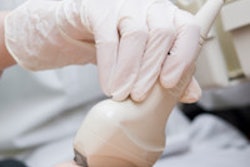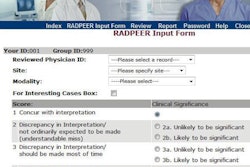When budgetary constraints prevented a radiology department in Taiwan from purchasing a new RIS to resolve serious patient scheduling and exam workflow issues, the PACS IT team stepped up to the challenge, creating an effective, low-cost workflow management system.
The radiology department of the 1,413-bed Kaohsiung Veterans General Hospital was experiencing a steady increase in the number of sonography exams it needed to perform. In 2007, the five sonographers were working at what they felt was maximum capacity, performing 45,732 ultrasound exams. By 2009, the exam volume had increased to 50,133 studies, with no increase in the number of sonographers.
The sonography division was beset with problems related to exam scheduling and patient throughput. This created a high level of stress for clinical staff, clerical personnel, and the patients themselves. Of all the services offered by the radiology department, sonography exams generated the highest level of patient dissatisfaction and complaints, according to an article published online July 3, 2012, in the International Journal of Medical Informatics.
The radiology department needed to create a more efficient method of scheduling patients and accommodating emergency patients needing ultrasound exams. It also needed to create schedules that effectively matched patients with resources; for example, scheduling a female patient with a female sonographer for specific exams. The department also needed to reduce the amount of time patients waited, and it needed to find a way for radiologists to check an exam in progress without having to physically go to the exam room when sonographers had questions or concerns.
A RIS-like system was being used, but it had no scheduling or workflow management functionality. The hospital was using an HIS installed in 1990 with an IBM mainframe computer and Microsoft Windows 7 operating software. The new computerized workflow management system needed to interface with this legacy system, as well as with the hospital's PACS.
With a limited budget and the fact that any software program had to be designed to work transparently with several technologically "old" healthcare IT systems, the IT staff responsible for PACS operations decided to develop the software internally. With input and support from radiology operations staff, radiologic technologists, and radiologists, the IT team developed a workflow management system within six months.
Manual scheduling
Prior to 2009, the department's annual workload of approximately 400,000 exams was scheduled manually. The PACS IT specialists wanted to automate this process and needed to develop an interface with the HIS.
For sonography exams, which needed a 15-minute time slot, on average, the IT team made it possible for ordering physicians to schedule exams directly through the HIS. This alleviated the congestion of patients bringing exam orders to the reception desk for scheduling.
The workflow software also eliminated the longstanding practice of having all outpatients arrive at the same time in the morning or the afternoon. This practice overcrowded scheduling desks and waiting rooms at peak arrival periods, and it caused inordinately long wait times for many patients.
Because the ability to assign an arriving patient to the appropriate sonographer and exam room varied based on the experience of the reception staff, the IT team incorporated an automated patient sorting algorithm. Due to the inexperience of some staff, patients checking in for their exams were sometimes assigned to the wrong exam room, resulting in additional delays and arguments among the patients, clerical staff, and sonographers.
Upon check-in, the automated patient sorting algorithm assigned patients to exam rooms based on exam priority, exam type, and gender. Critical patients admitted to the emergency department or hospital received the highest priority and were put at the top of the list. Patients who needed gender-specific exams were assigned to designated exam rooms. The other patients were evenly distributed based on the workload of the sonographers.
The team also incorporated a real-time room monitoring system. This displayed the number of waiting patients assigned to a room, along with a green, yellow, or red status light based on a patient's ID number and representing the waiting time for that patient. It also allowed the staff to advise a patient if a delay had been created by a critical patient needing an exam. The notification system created a calmer waiting room, as patients knew exactly what to expect, and it reduced stress for all concerned, according to co-author Dr. Tsung-Lung Yang, the section chief of teleradiology and musculoskeletal radiology.
Finally, to resolve delays that occurred when sonographers asked for radiologist feedback during exams, all sonography units received a broadcasting and recording device. The device broadcasts real-time console images onto a computer that can be accessed via a Web page. Using smartphones or tablets from any location to access the images, the radiologists could then provide immediate feedback to sonographers with a phone call.
Patient satisfaction
Lead author Dr. Ming-Feng Li of the radiology department and colleagues conducted patient and staff satisfaction tests for a six-month period from March to September 2009, and again for the same time period in 2010. The workflow software was activated in February 2010. Exam waiting times dropped dramatically, as did stress levels reported by sonographers. Patient satisfaction jumped from 51.6% to 85.8%, and as reported anecdotally, other members of the clinical and clerical staff were very pleased with the change.
Between the two time periods -- March to September 2009 and March to September 2010 -- the number of monthly ultrasound exams increased from an average of 2,705 patients to 2,808 patients, the authors noted. The number of sonographers remained the same, at five.
Ideally, a new RIS would have offered the same functionality as the software developed by the PACS IT specialists -- but the hospital did not have this option. The total cost to develop and install the software, along with the cost of hardware, was the equivalent of $80,000. The initiative took only five months of preparation, installation, field testing, and staff training.
"From the hospital's point of view, the overall cost in time and money was rather inexpensive while capable of increasing the total number of examined patients under limited budget and human resources," the authors wrote. They believe that other radiology departments with limited budgets and resources could easily replicate their workflow solution.



















